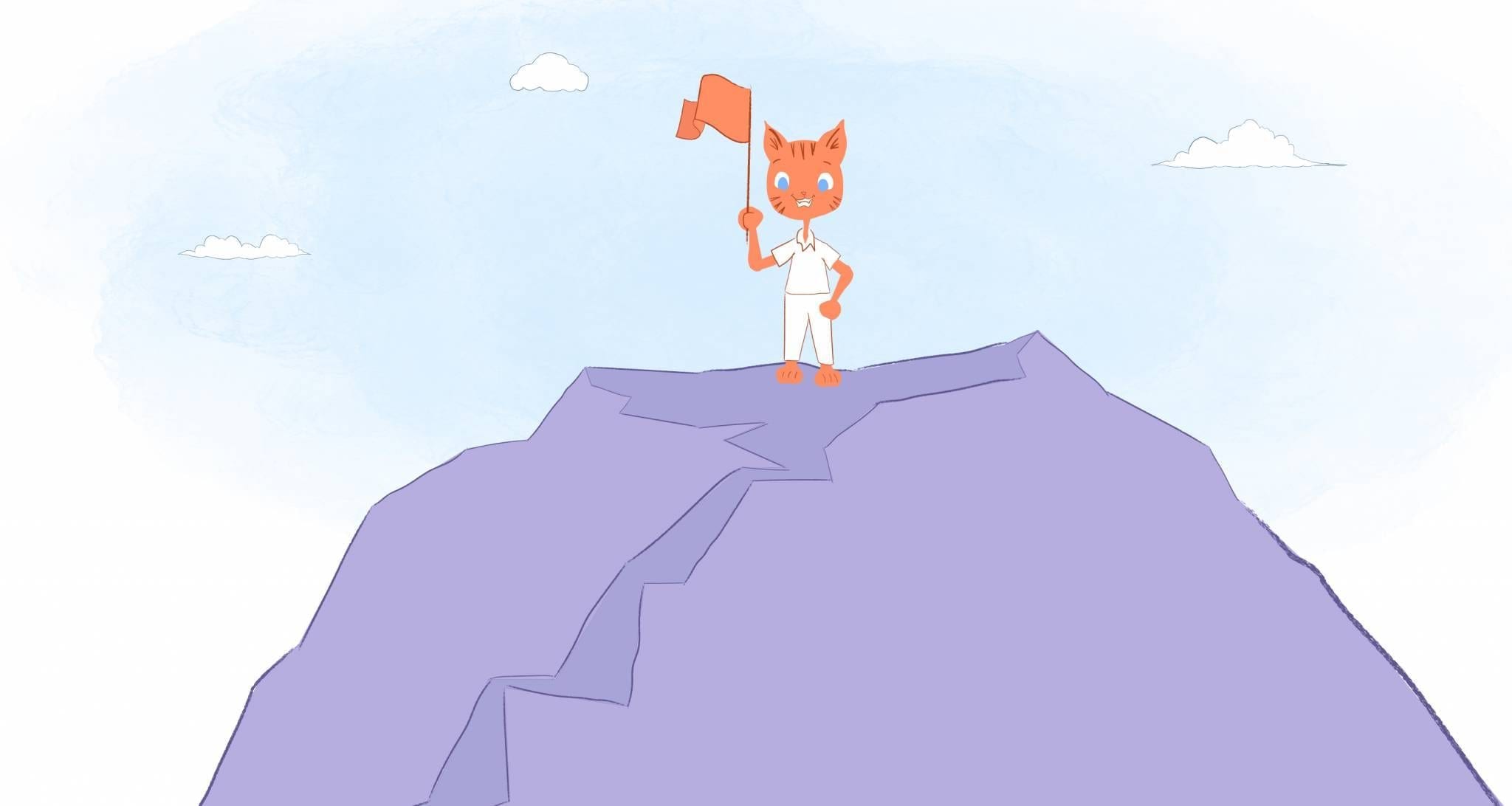

Wouldn’t it be nice if you could just wake-up and have a productive day without having a plan? It sounds liberating. But that’s just not how it works. I mean, it’s like building a house. You need a plan to determine the necessary materials if the foundation is sound, and the steps required to assemble the home properly.
Long story short, productivity doesn’t happen. You need to make a plan. And, here are some ways that you can do precisely that.
Make a choice to be productive, not busy.
“Productivity put simply, is the name we give our attempts to figure out the best uses of our energy, intellect, and time as we try to seize the most meaningful rewards with the least wasted effort,” Charles Duhigg writes in Smarter Faster Better. “It’s a process of learning how to succeed with less stress and struggle.”
Duhigg adds that it’s also “about making certain choices in certain ways. The way we choose to see ourselves and frame daily decisions, the stories we tell ourselves, and the easy goals we ignore.” It’s also “the sense of community we build among teammates; the creative cultures we establish as leaders.” In short, these are “the things that separate the merely busy from the genuinely productive.”
I highly recommend that you read Smarter Faster Better for yourself. But, in my opinion, the main takeaway here is choosing to be productive and not busy. And, that can be accomplished by doing the following:
- Identify what is essential and necessary. Or, in other words, prioritizing your time by spending it on the right goals. Duhigg suggests pairing Stretch and SMART goals.
- Optimize your organization. Another way to put this would be to systemizing your life. Examples would be automating and delegating tedious tasks and cutting back your to-do-lists so that they only include your three most important tasks.
- Identify and eliminate distractions like turning off your smartphone or working in a quiet place.
- Stop worrying about perfection. It doesn’t exist and is a waste of your time and energy.
- Say “yes” more strategically. Let’s say you have a meeting request. Does it help you reach your goals? If not, decline it.
- Establish “psychological safety.” Decide on your work hours, as well as when and how. If in a leadership position, grant your team this sense of ownership too.
- Get out of cognitive tunnels. Don’t be reactive. Predict possible scenarios and visualize how they’ll play out so that you’re prepared.
- Be honest with yourself about your progress. Ask yourself if what you did brought you any closer to your goals.
Think 168 hours, not 24.
So many of us believe that we don’t have the time to exercise, read, or spend time with friends and family. Laura Vanderkam disagrees. She believes that we have more time then we think.
“The problem is not that we’re all overworked or under-rested, it’s that most of us have no idea how we spend our 168 hours,” Vanderkam wrote in, 168 Hours: You Have More Time Than You Think. She also discussed this topic more recently, on her “Before Breakfast” podcast.
So, how can you maximize these 168 hours?
For starters, find out how you’re spending your time. I would use a combo of the 168 hours time management spreadsheet and time tracking tools. To get a more accurate figure, you should do this for a couple of weeks.
Review your notes. You want to be on the lookout for anything time-wasting activities that can be delegated, deferred, or dropped. You should also see when you’re most productive so that you can build a routine and schedule around when you’re most productive.
How you plan your week is totally up to you. But, here some pointers to help keep you organized:
- Set an intention for each week.
- Prioritize your tasks and add them to your calendar first. Hint, these are the things that are important, urgent, and connect to the big picture.
- Schedule your days more strategically, like creating theme days.
- Block out time for the unexpected and fulfilling routines like your hobbies.
- Use downtime to your advantage. On Sundays, prep your meals for the week, for example. When going to the gym or for a walk, invite a friend to kill two birds with one stone.
RPM.
“Created by entrepreneur, best-selling author, and public speaker, Tony Robbins, the Rapid Planning Method (RPM) makes people focus on doing what is truly important,” explains Rose Leadem in a previous Calendar article. “However, unlike many other methods, RPM not only urges people to hone in on their most important tasks but to understand why they are the most important to them.”
“RPM is a flexible plan that combines a time management system with a process of personal fulfillment, so you not only feel like you’re getting things done but that they have a purpose too,” adds Rose.
If you want to give the RPM system a try, here are the five steps you need to take:
- Capture all of your ideas, wants, and ideas. As Team Tony points out, though, “This goes beyond creating a to-do list and focuses on your motivations instead.”
- Create. Next, create your RPM plan by asking, “What do I really want? Why do I really want it? What specific actions must I take to make this happen?”
- Commit. Identify the steps needed to achieve your goals and add them to your calendar.
- Complete. Now it’s time to take massive action to accomplish your goal. In case you’re wondering, this is the “M” in RPM.
- Celebrate. “Lastly, once you have learned how to manage your time better and achieve your goals, it’s time to celebrate your results.”
Harness the power of KPIs.
“All great, successful companies have ways of measuring performance,” notes Dan Ryu in a Medium post. “They have KPIs (Key Performance Indicators), which they monitor closely to ensure they’re reaching the goals they’ve set.”
Just like these successful organizations, take into consideration your own KPIs. Stuck? Ryu recommends that you ask, “what determines success for you on a daily, weekly, quarterly basis?”
The reason this is effective is that “KPIs forces you to think through the process goals you need to reach to get an outcome.” Just remember when creating them, that they’re “both a process-oriented and outcome-oriented goal.” When you, you’ll also be able to know if you’re productive, effective, and the overall value of your time.
Optimize your environment.
Whether you realize it or not, your environment can influence your productivity—case in point, the layout of your office. If you’re stuck in what can best be described as closet, that is painted white and dimly lite, then that isn’t exactly a productive work environment.
A productive workplace should be one that allows for movement. It should also let in natural light and painted the right colors. You should also incorporate plants and personal items. And, always make sure that you can easily access the tools you need to facilitate workflow — like arming yourself with the best productivity technology.
Other considerations would be investing in ergonomic furniture, keeping the thermostat at around 70 degrees, and removing the clutter from your workplace and life in general. You should also have healthy snacks in proximity. And, if there’s background noise, put on a pair of noise-canceling headphones.
Fight off indecision fatigue.
Instead of fighting against your natural body clock, work with. That means determining your biological prime time and focusing on your most important or challenging tasks during those blocks. For most of us, that’s a couple of hours after waking up.
What’s more, to preserve this precious energy, you also need to improve your decision making. One easy way to accomplish this would be to reduce the number of decisions you have to make. For example, laying out your clothes for each day of the week so that you don’t have to make this choice every morning.
Other strategies you could try would be:
- Conducting a cost-benefit analysis so that you’re using both sides of your brain.
- Simplifying the battlefield so that you can “prop up decisions.”
- Making your decision when your rested and clear-headed.
- Set time limits.
- Outsmart your cognitive bias.
- Use your past and intuition to guide you.
It doesn’t happen overnight.
Finally, no matter how much you’ve planned, don’t expect immediate results. If you decide that you want to make some changes in your health, and you’re going to go to the gym — it will take some time for the results of your efforts to show in your life. You’re not going to see any drastic changes after your first couple of visits or even the first month. It may take many weeks or months before you notice the results.
Furthermore, you may experience setbacks along the way. Make your adjustments and see if that helped. If not, try a different technique. The key is to create and implement a plan that boosts your productivity. Your plan and strategy may not work for others. Find something that works for you.











Angela Ruth
My name is Angela Ruth. I aim to help you learn how Calendar can help you manage your time, boost your productivity, and spend your days working on things that matter, both personally and professionally. Here's to improving all your calendars and becoming the person you are destined to become!